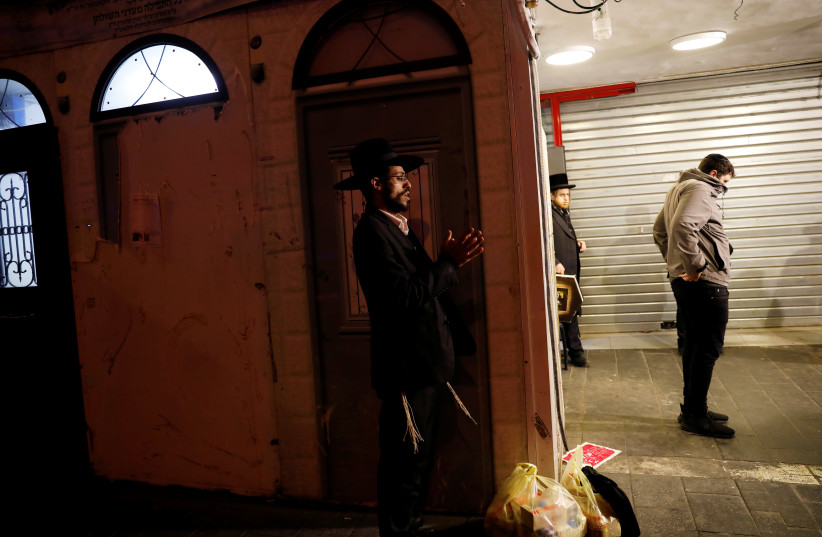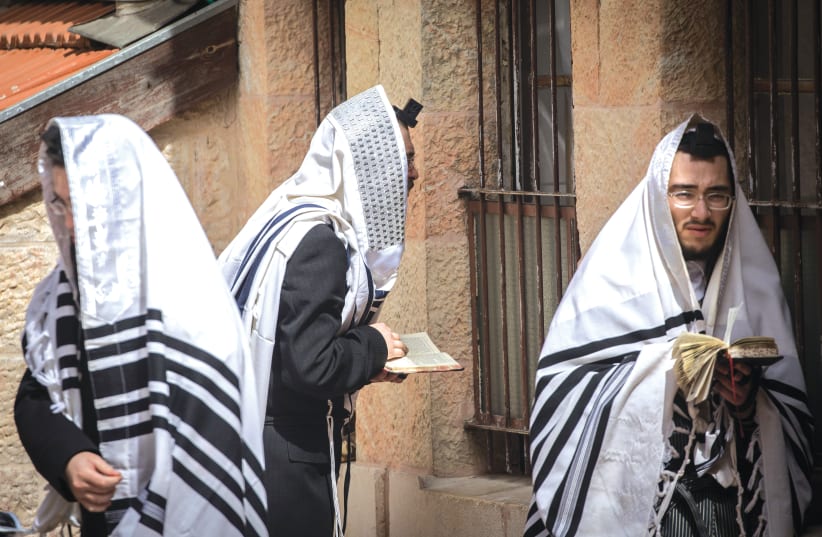The corona pandemic has had an effect on many aspects of our lives. Many people have decided to work from home, study at home, shop online, meet friends online rather than in person, and get married or celebrate other major events with a small list of invitees.For Jews who pray, study or attend social functions in a synagogue or temple, on a regular basis or just on the High Holy Days, behaviors relating to synagogue life have undergone many changes, some of which may stay with us for a long time after corona is long gone.Although all are aware that a contagious virus has become part of our lives, people’s responses vary considerably. As such, some people wear masks everywhere outside their home, whereas others make distinctions between very enclosed areas such as a restaurant and semi-enclosed ones such as a mall. The preferred actions taken by individuals during the corona crisis are related to one’s political beliefs, trust in the medical/health establishment, the way significant other friends and relatives behave, and personality.
For religious people, the interior of the synagogue during these times is no longer the best or preferred choice. Indeed, staying at home or praying on the street or porch or garage are all popular alternatives.As Zoom has made available online participation in many, if not most, synagogue activities for the non-Orthodox, praying in a well-lit and comfortable living room can still allow one to be a part of a group prayer service.
BEFORE DESCRIBING actual synagogue members’ behaviors during the pandemic, it is worth considering some of the benefits of prayer, even for those who would not describe themselves as actually religious. A Pew Research Center study found that 55% of US adults said they had prayed for an end to the spread of coronavirus. This compares to the fact that fewer than half of US adults say they belong to a church, synagogue or mosque, according to the Gallup survey taken during the first months of 2021.It would seem that prayer provides comfort during times of crisis, the act of just doing something; or perhaps it conjures up fond memories of one’s parent or grandparent praying when they were coping with some difficulty.Numerous studies have shown that prayer makes people feel calmer, more secure or even more optimistic. Also, it has been shown to have actual positive health outcomes. In a famous review of various studies on the effects of prayer reported in 2005 by Coruh and colleagues, prayer was found to help sick people, including those who reported cardiac symptoms and even for a group of women who had prayed to become pregnant. Interestingly, there is at least one study that showed health improved for a group that was prayed for, even if they were not aware that there were people praying for them.
WITH THE advice of health authorities, many prayer services moved outside the synagogue. The first reaction that one may have to pray outside the synagogue walls is negative. How can we possibly be considered a community of worshipers outside on the street? In the winter it is cold outside, and in the summer it is warm. Seats are, at best, folding chairs. It is hard to hear the cantor or leader of the services, and the noise on the street interferes with concentration. This was probably the reaction of most people, the first time they moved out on the street to pray. Yet, as prayers continued to be conducted on the street, especially when the number of people infected with corona increased, people found ways to handle the new environment.From the perspective of most full-time members of a synagogue, the community component is very critical. The activities that are part of synagogue life are an essential part of most members’ lives. Thus, besides the prayers, lectures by the rabbi or other speakers in the community are a very popular part of membership. As these lectures in the past were planned considerably ahead of time, it was relatively easy to plan one’s participation. Showing up at the synagogue for these events became not only a religious ritual but also a social happening. One would see friends and become updated on what was going on in their lives. In a sense, the interior of the synagogue, which has become desolate during the week, has been replaced with social media such as Zoom which provides videotelephony and online chat services through a cloud-based peer-to-peer software platform and is used for teleconferencing, telecommuting, distance education and social relations. It has become a mainstay in the life of many synagogues.Although it misses the physical contact of lectures and prayers within the synagogue, it has several advantages. The meetings, lectures and sermons conducted over the Internet may reach people more efficiently, especially for those who live far from the synagogue and who will not venture out in the rain or must take care of little children. Also, guest lecturers who live in other cities and would normally not be heard in one’s synagogue can now present his or her ideas to the whole congregation while the members sit comfortably at home. As far as prayers are concerned, according to some in the Reform and Conservative movements, virtual prayer services had more attendees than the prayers in the temple. In addition to the spiritual aspects that prayer provides, one possible reason for the popularity of such prayer services is that they are more interactive, with participants singing, dancing, and communicating with each other, which enhanced a sense of community.Community plays an important role for respondents who are members of a synagogue or temple. In one study of congregants, about two-thirds of respondents said that a sense of belonging to a religious group with similar perspectives was important or very important to them.The absence of a physical place for the usual prayers was indeed felt as, congregants spoke about missing their place in the synagogue, as well as the social and religious roles it filled in their lives. However, a rabbi in Jerusalem told The Jerusalem Post over a year ago that as an Orthodox Jew and a mystic, he truly believes that there is a superior being controlling the world who is literally everywhere and that everyone’s voice is heard no matter where they are. There is another side to the present situation that is potentially positive. In the daily and Sabbath prayer services that have been going outside the synagogue, there is a feeling of informality or comfort. One’s space is not only the seat and its environs where the congregant could be found every day/and or week before the corona epidemic. During the present period, I have noticed that there is much more movement during the service when it takes place outside, and as the seats are not attached to the ground, the congregants can be found frequently in different locations.One of the more popular measures of personality is called the Big Five. Psychologists believe that there are five basic dimensions of personality, labeled as conscientiousness, agreeableness, neuroticism, openness, and extraversion. Many studies have shown that the “agreeable” person has a broad range of interests, is curious about the world, and eager to learn new things and enjoy new experiences. He/she is open to change and is more willing to adapt to new environments.If you hear some of your friends speaking fondly of the old days when sitting in the synagogue was so wonderful and the present situation of praying outside the sanctuary as terrible, he or she may very well be somewhat lower on the openness scale.In any case, we all hope that the epidemic will soon be behind us, and I am sure much of our religious practice will return to the way it was. I am also confident that some of the new behaviors adopted so as to cope with the present crisis will also remain with us for a long time. The writer is a professor of psychology at Ariel University and professor emeritus at Bar-Ilan University.
